Croatia has long been a well-known ground for football talent, producing a wealth of skilled players who have made their mark on the global stage.
Croatian footballers have consistently showcased their prowess on the world stage, with the National Team being runners-up in the 2018 World Cup and then finishing in third place four years later.
Over the years, the country has produced some incredible talents, such as the iconic midfield maestro Luka Modrić at Real Madrid. the lethal striker Davor Šuker, who also turned out for Los Blancos in addition to Arsenal and West Ham, and Manchester City’s versatile defender Joško Gvardiol, to name just a few.
With the Euros on the horizon, the footballing world will undoubtedly turn its gaze once again to Croatia.
So we thought there is no better time to showcase some of the best young players in the country.
This tactical analysis will cover three players who we believe have big futures in the game.
In this scout report, we will delve into the profiles of these promising players, analysing their strengths, playing styles, and potential impact on the pitch.
We will highlight how these players fit into the tactics of their current clubs and what they could bring to their respective teams in the near future.
Noa Skoko – Hajduk Split
The first player we are going to look at in this analysis piece is 18-year-old Noa Skoko.
His name may sound familiar as he is the son of former Wigan Athletic player Josip Skoko.
The Wythenshawe-born midfielder was named one of the best players born in 2006 by British newspaper, The Guardian.
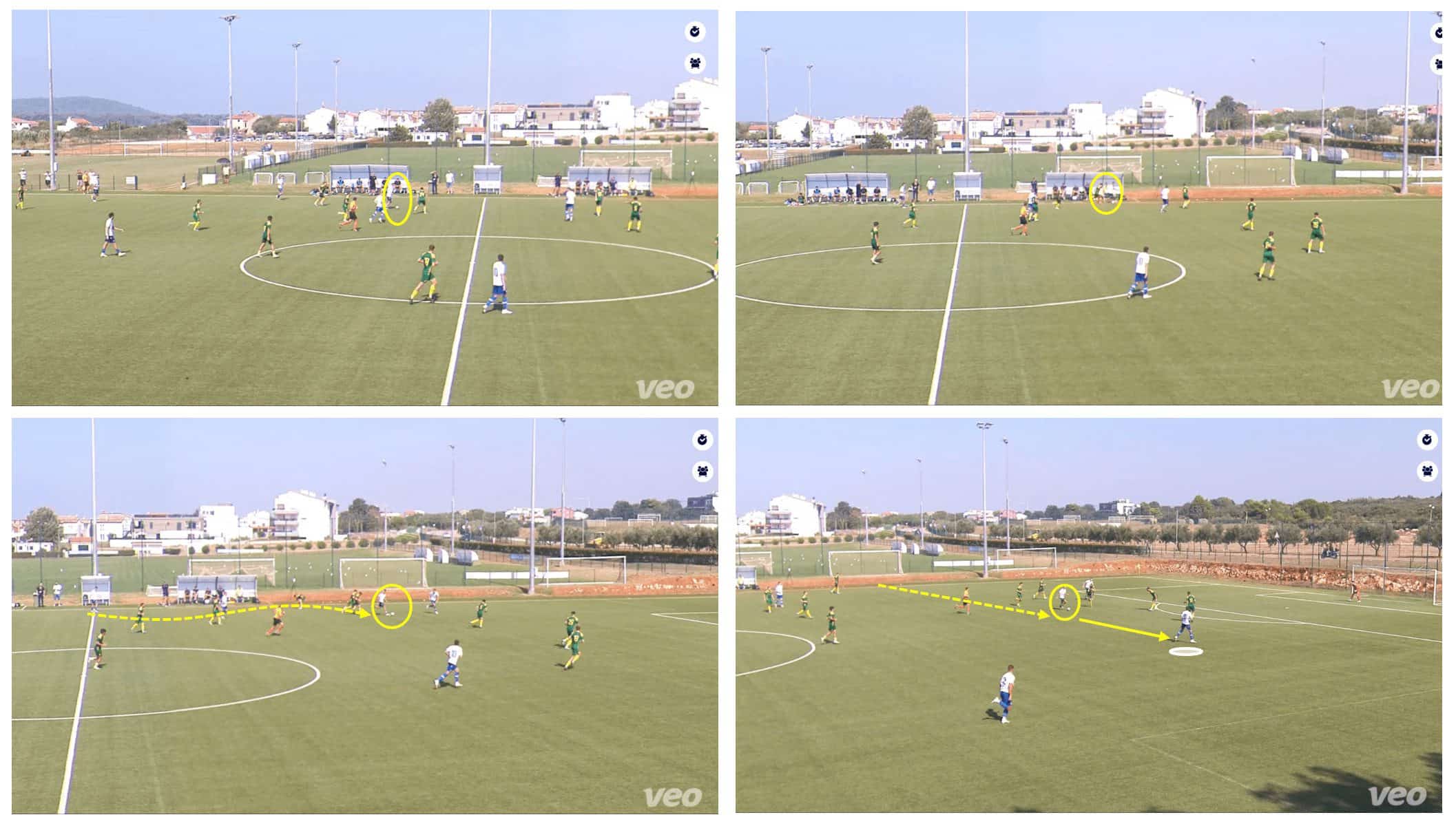
Skoko is one of those players who just loves being on the ball; he consistently looks to be a positive force for Hajduk Split U19s, especially in the attacking transitions.
We can see here that he receives the ball in his own half and drives forward into the attacking third, using an excellent burst of acceleration.
This allows him to weave in and out of opposition challenges before playing a pass into the path of his teammate.
The midfielder averages 6.4 take-ons per 90, demonstrating his desire to run at his opponents and beat them using his quick feet and trickery.
Skoko has the freedom to roam from his position. By constantly moving across the midfield and finding pockets of space, he can pick the ball up in pockets of space, often drawing opponents towards him.
This allows him to often dictate the tempo of the game and initiate quick attacking transitions through his directness when carrying the ball.
Furthermore, Skoko serves as a creative outlet for the Hajduk Split team.
He averages 2.9 key passes per 90 minutes, which shows that he is capable of playing alongside his teammates who are getting into goalscoring positions.
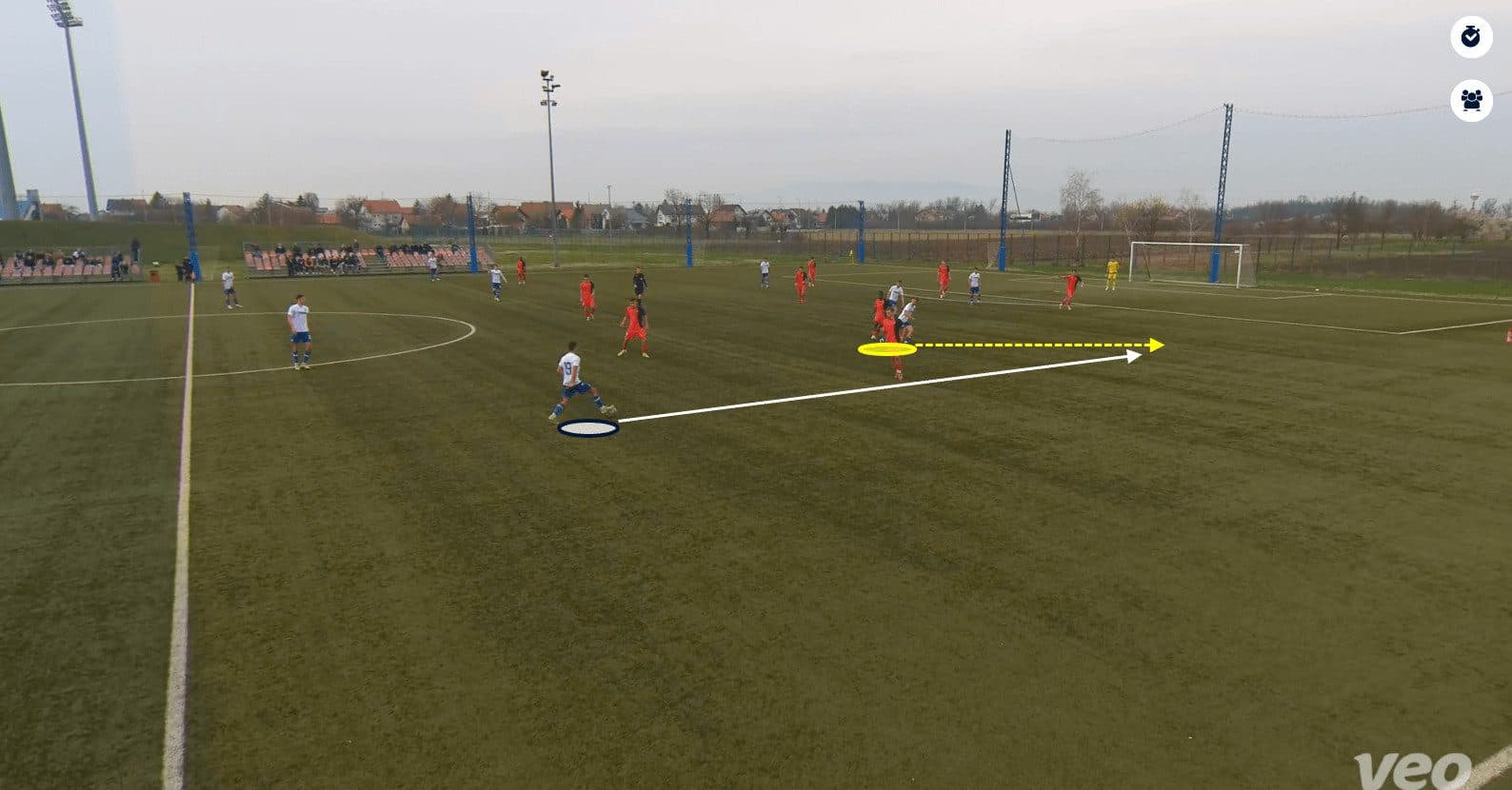
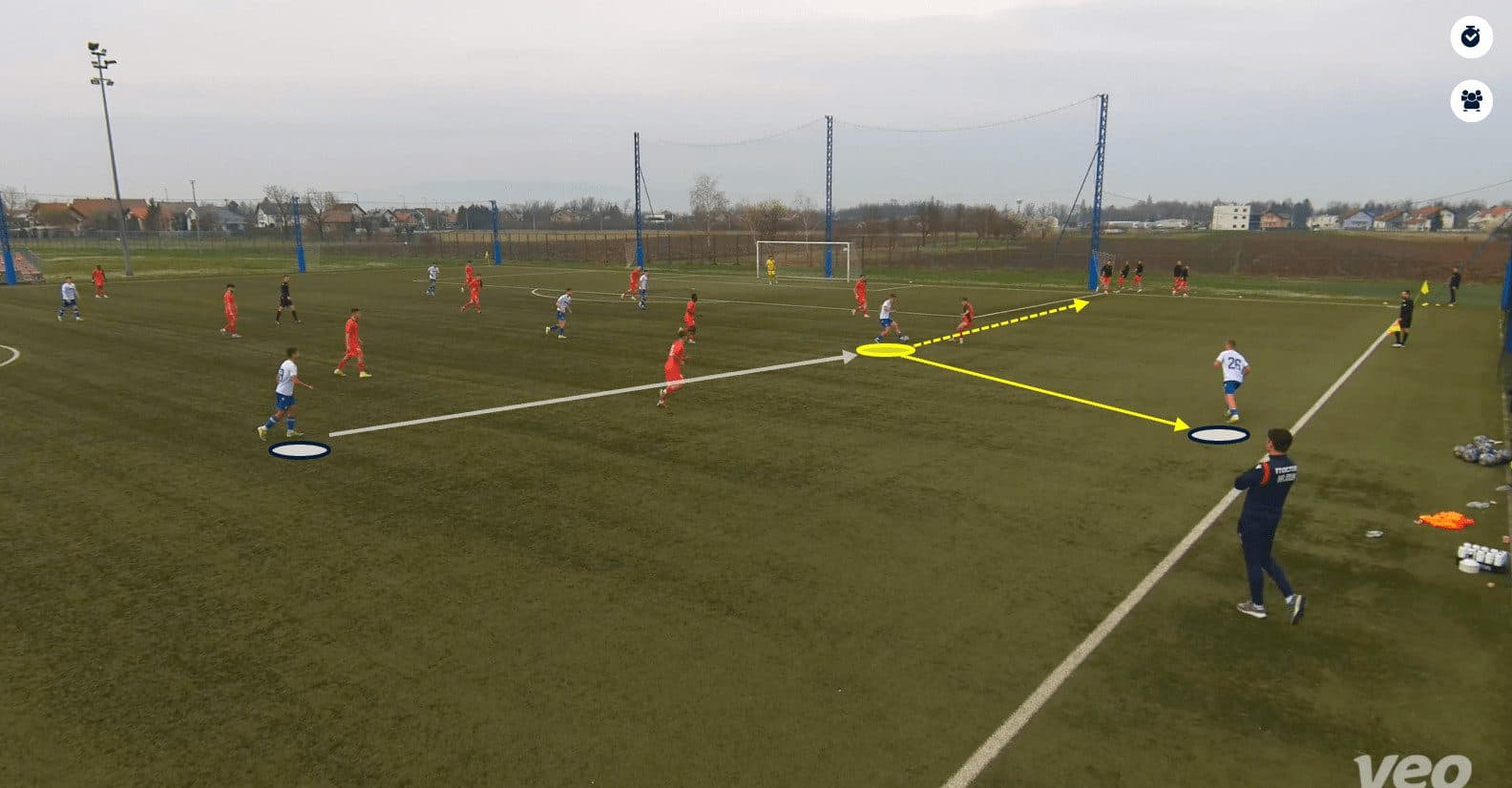
Noa Skoko also displays some wonderful off-the-ball movement, picking up the ball in pockets of space and linking up well with his teammates.
In this instance, he identifies where the space is and makes a run into it, anticipating a pass from his teammate.
Skoko then plays a first-time pass into the feet of the fullback and continues his run, dragging the defenders with him, creating space for his teammate.
The young attacking midfielder serves as a crucial link between defence and attack, often acting as a conduit for passing sequences and facilitating combination play in the final third.
His positional awareness enables him to find space between the lines of the opposition’s defence and midfield, allowing him to receive the ball in dangerous areas and orchestrate attacking moves.
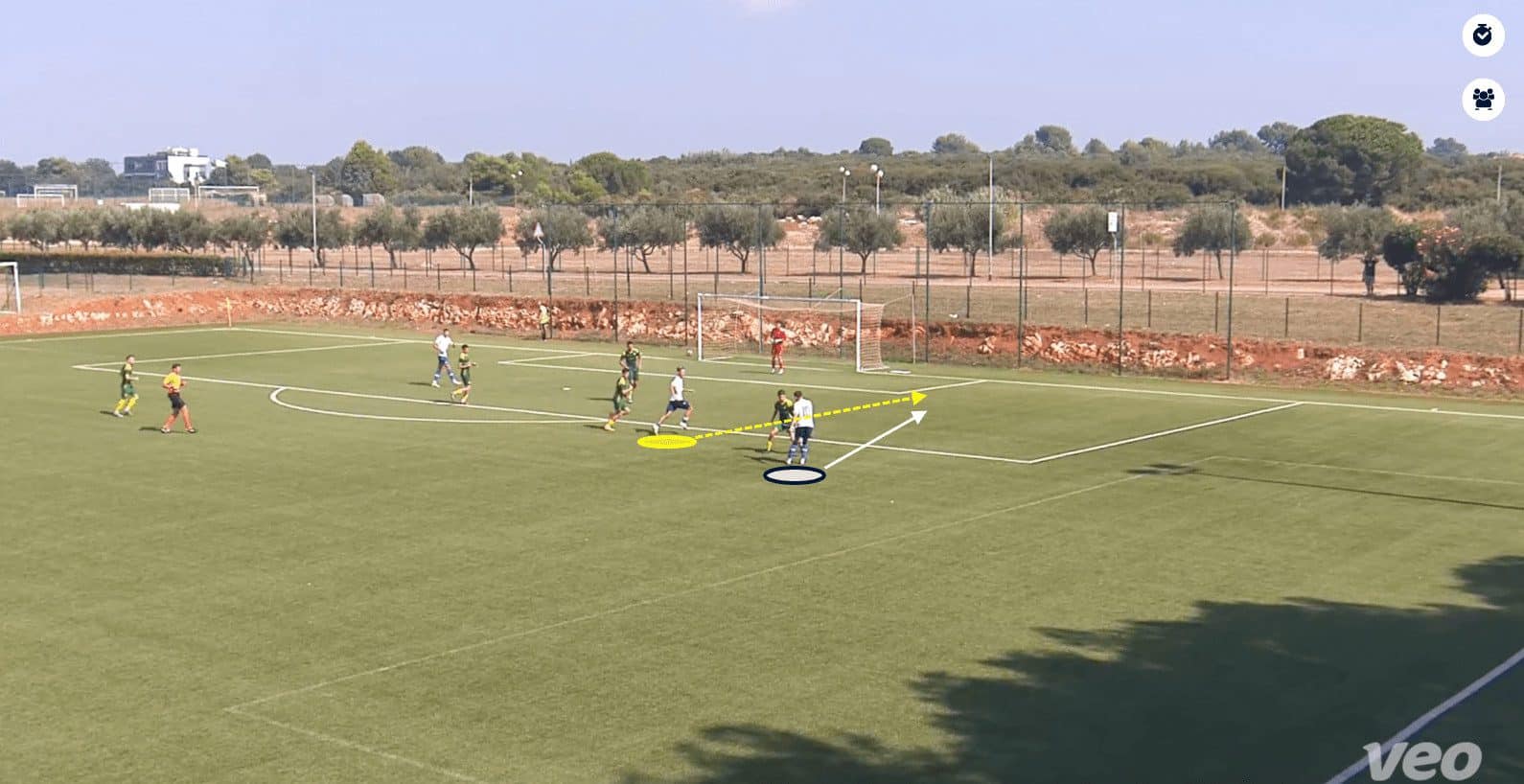
Here, we can see him making a run behind the opposition’s defensive line, which he consistently does throughout games.
By making intelligent runs into channels and behind defenders, Skoko forces the opposition to adjust their defensive shape and provides opportunities for teammates to find him in dangerous areas.
His constant movement and willingness to penetrate the defensive line disrupt the opponent’s organisation.
On this occasion, he receives the ball, gets his head up and then plays in his teammate at the far post.
Additionally, Skoko is physically strong and able to hold off his opponent’s challenges, often using this ability to pin and spin his man.
This creates space for him to play passes in tight situations and create goal-scoring opportunities for his teammates.
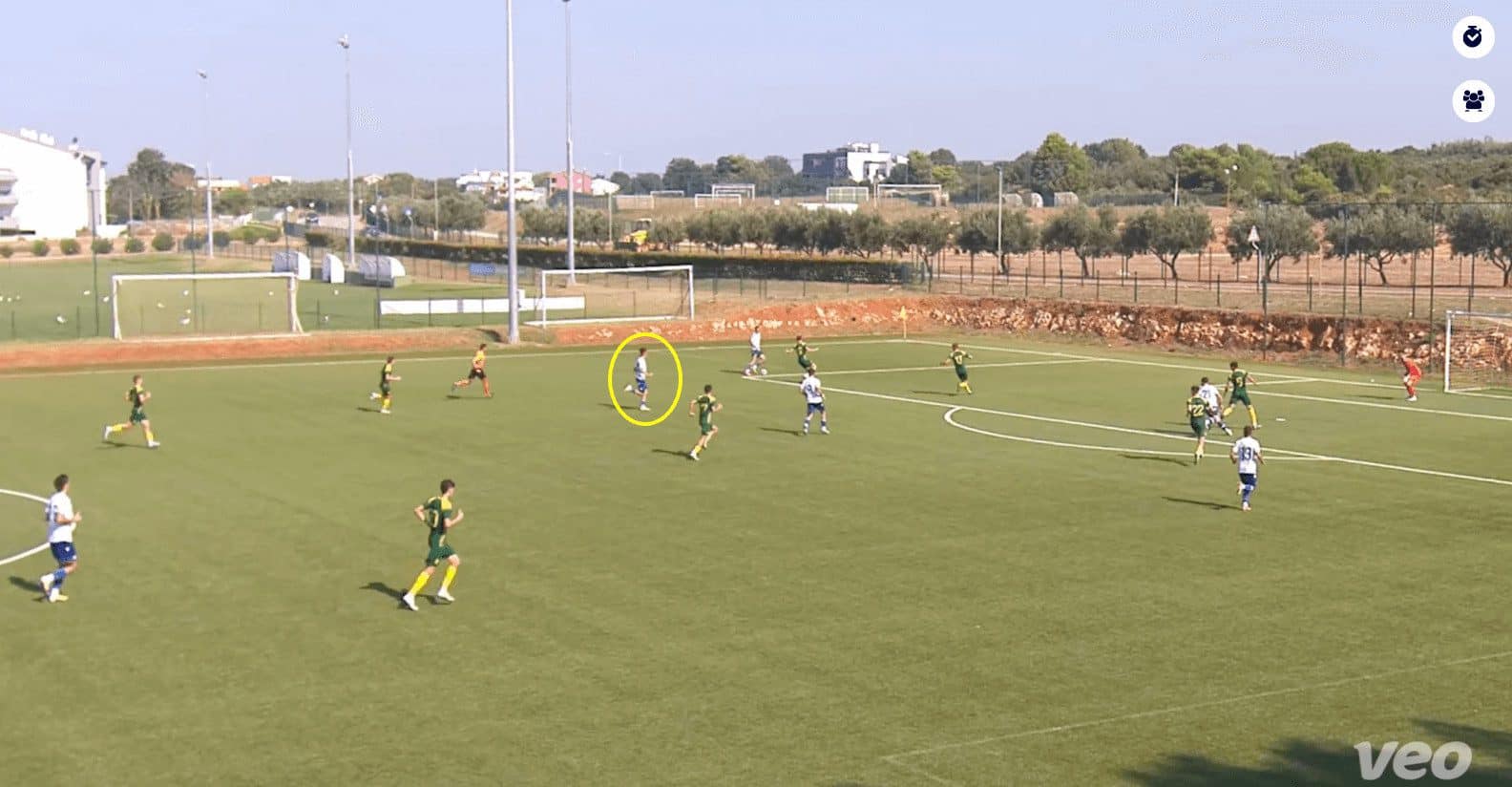

Moreover, Skoko adds a goal-scoring threat to Hajduk’s attacking play, especially with his shooting from distance.
Playing as the ten in a 4-2-3-1 system, he likes to operate on the edge of the opposition area.
In this example, if allowed to receive the ball in space, Skoko will automatically look to hit a shot from the edge of the area.
He possesses a powerful strike and is confident shooting with either foot, making it very difficult for defenders in these situations.
The Manchester-born midfielder averages 1.93 shots per 90, with 1.29 shots per 90 being from outside the penalty area, showing his desire to hit long-range efforts looking to catch the opposition off guard.
However, Skoko can be wasteful in these situations, as only 0.32 of his shots hit the target, suggesting he sometimes makes the wrong choice when in possession.
Overall, he looks to be a very promising midfielder; his physical strength and ball-carrying ability suggest he would be an ideal box-to-box midfielder in the future.
Diego Saina – NK Istra 1961
The next player we are going to look at in this scout report is NK Istra’s exciting centre forward, Diego Saina, who has been lighting it up at the Under 15 level this season.
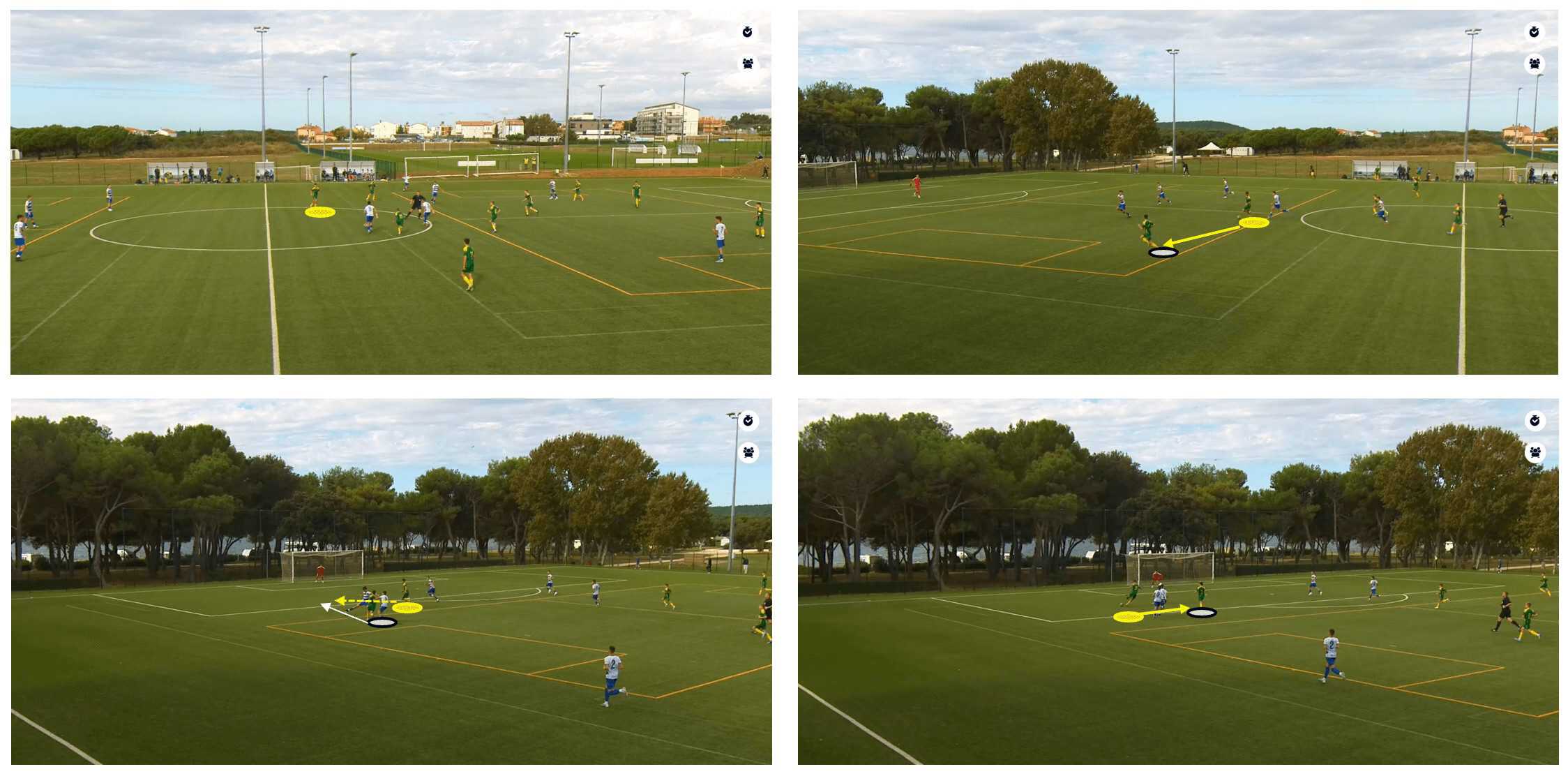
In the defensive phase, Saina typically remains the highest point of attack for NK Istra, as we can see here.
Upon regaining possession, the team immediately looks to the young centre forward to lead the attacking transition.
Rather than carry the ball forward himself, Saina prefers to link up with a teammate.
In this instance, the pair opt to execute a series of passes to bypass the opposition and reach the penalty area.
Saina’s ability to link up play effectively allows Istra to maintain possession in advanced areas of the pitch and sustain pressure on the opposition’s defence.
By combining with a teammate through quick, short passes, he can keep the ball moving fluidly, forcing the opposition to constantly adjust their positioning, especially when they are in the defensive transition, as shown above.
Moreover, by combining with a teammate through quick one-touch passes, flicks, and layoffs, Saina has the opportunity to unlock tight defensive structures due to the rapid ball rotation which can draw opponents out of position which then creates spaces for his team to exploit.
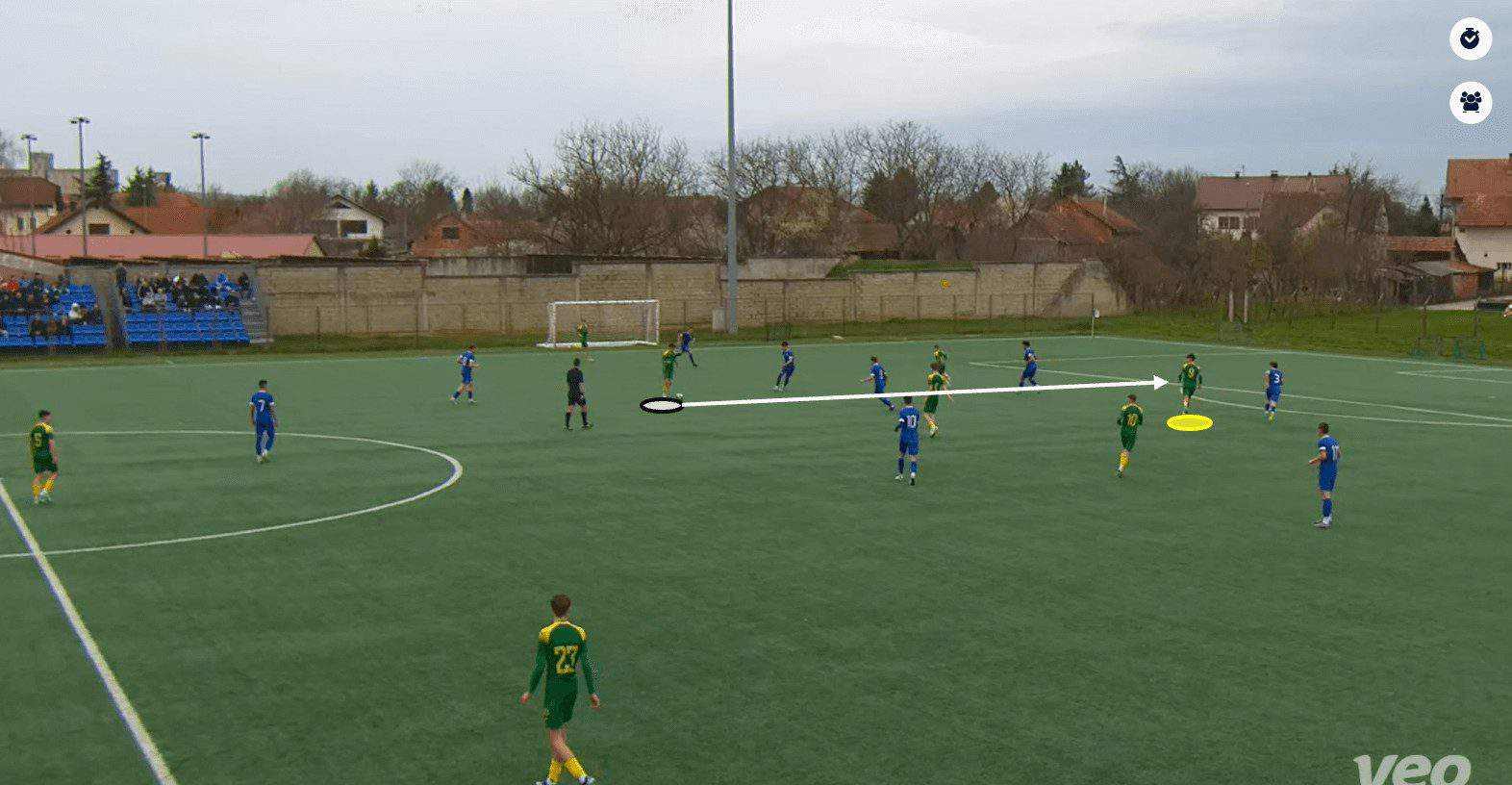
Furthermore, Saina likes to make runs in behind the opposition’s defensive line, as we can see here.
He is very aware of where the space is, and his off-the-ball movement then stretches the opposition’s defensive line and creates space for other attacking players to exploit.
His marker will usually look to stick close to Saina, as he is such a dangerous box striker.
Secondly, the young centre forward’s runs in behind the defence serve as a constant threat to the opposition throughout the game.
This allows NK Istra to exploit the gaps in the opposition’s defence and can lead to goal-scoring chances either for Saina himself or for his teammates.
The Croatian’s intelligent runs into the penalty area mean he can receive through balls or crosses from teammates and create goal-scoring opportunities via his movement and finishing ability.
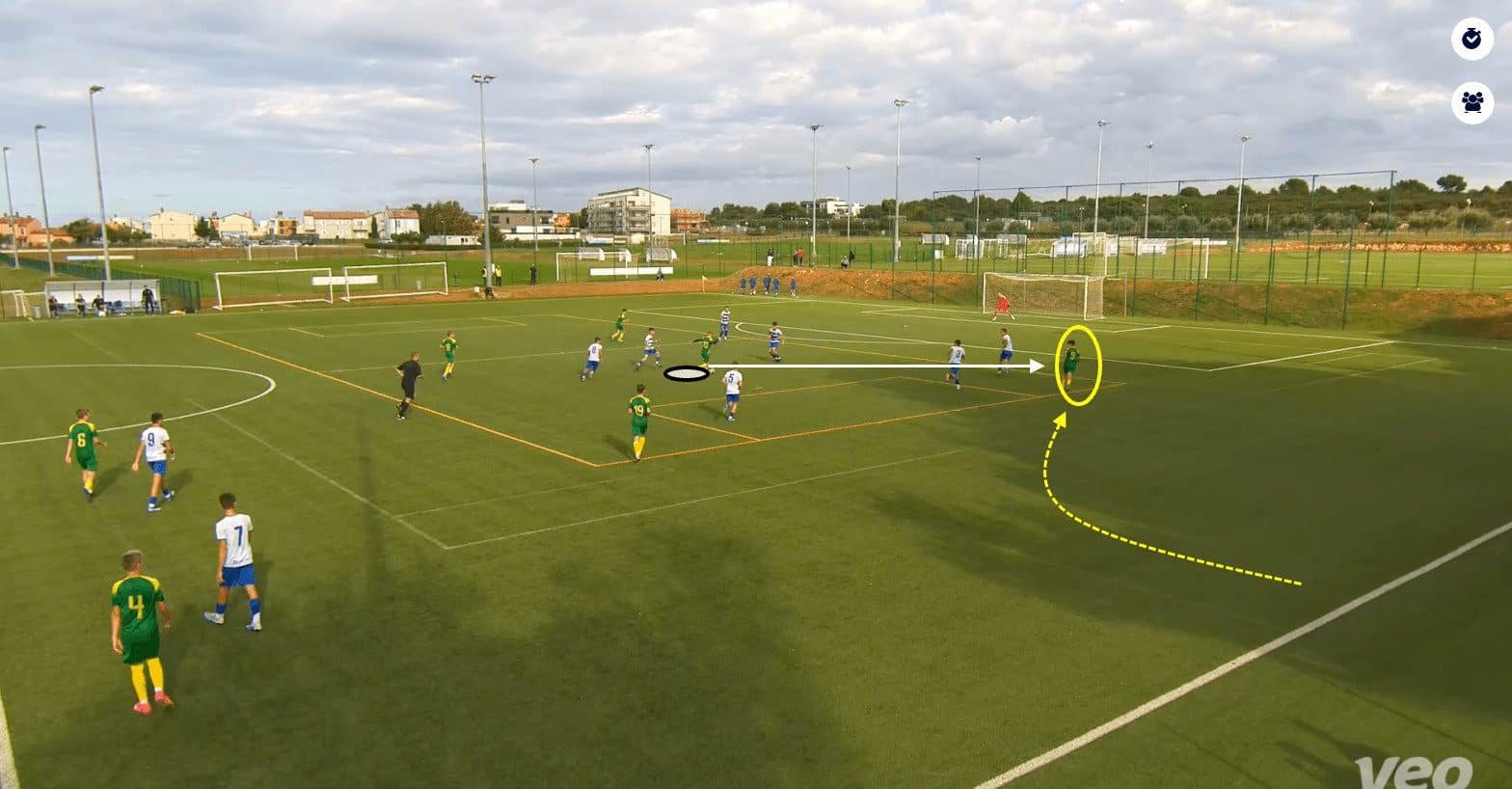
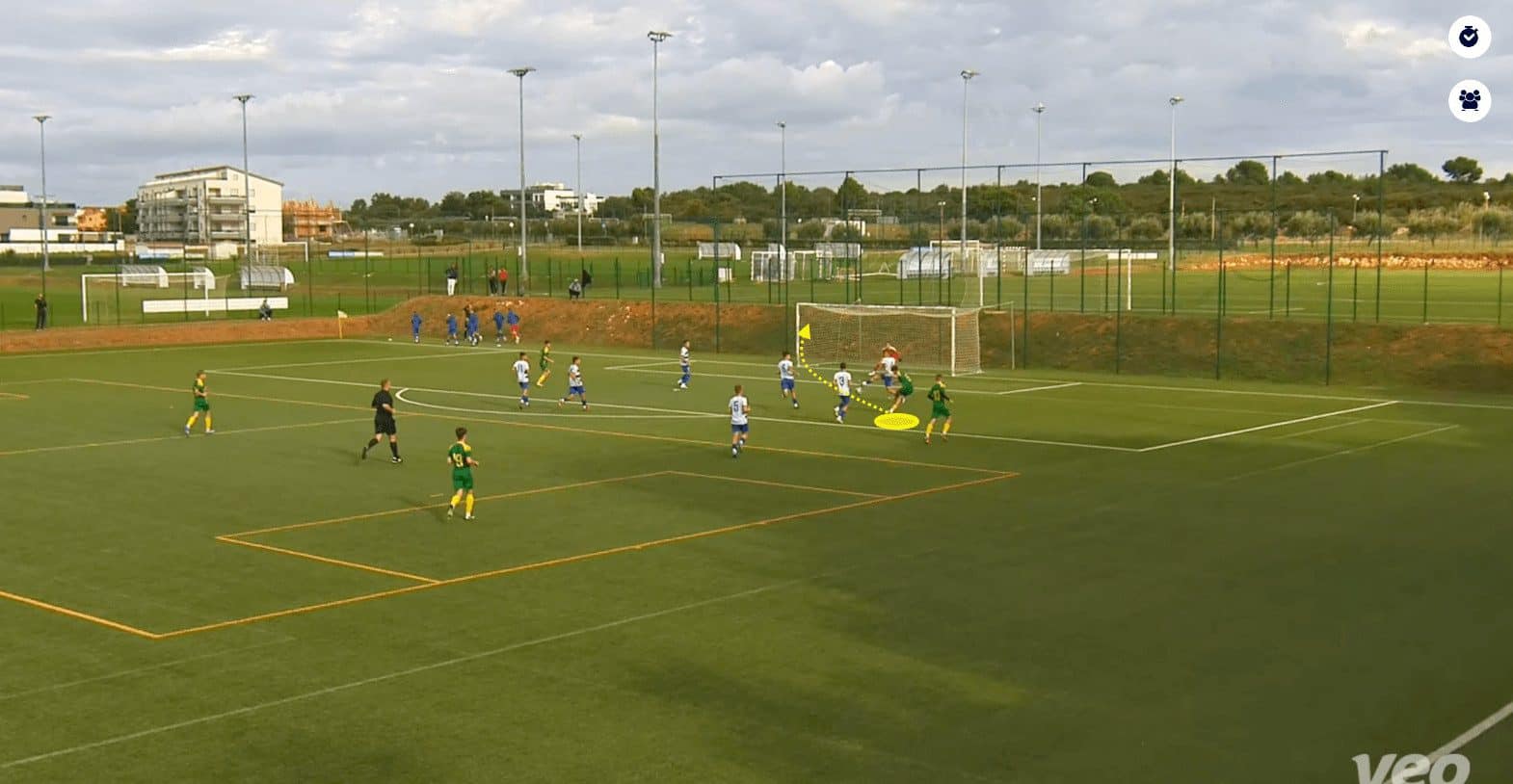
Additionally, we can see here how Saina loves to drift out to the right during build-up play.
This, of course, creates space in central areas for runners from midfield and allows the centre forward to cut in onto his favoured left foot.
Saina is very one-footed and almost exclusively shoots with his left foot, which sometimes is an issue as optimal shooting opportunities can be bypassed due to his insistence on transferring the ball to his preferred foot.
However, in this example above, he cuts inside and calmly executes a curling shot into the top corner.
The 14-year-old is an excellent box striker, as mentioned earlier.
He averages 2.2 shots per 90, with 2.1 per 90 from inside the area.
Additionally, 1.67 of Saina’s shots are on target per 90 minutes.
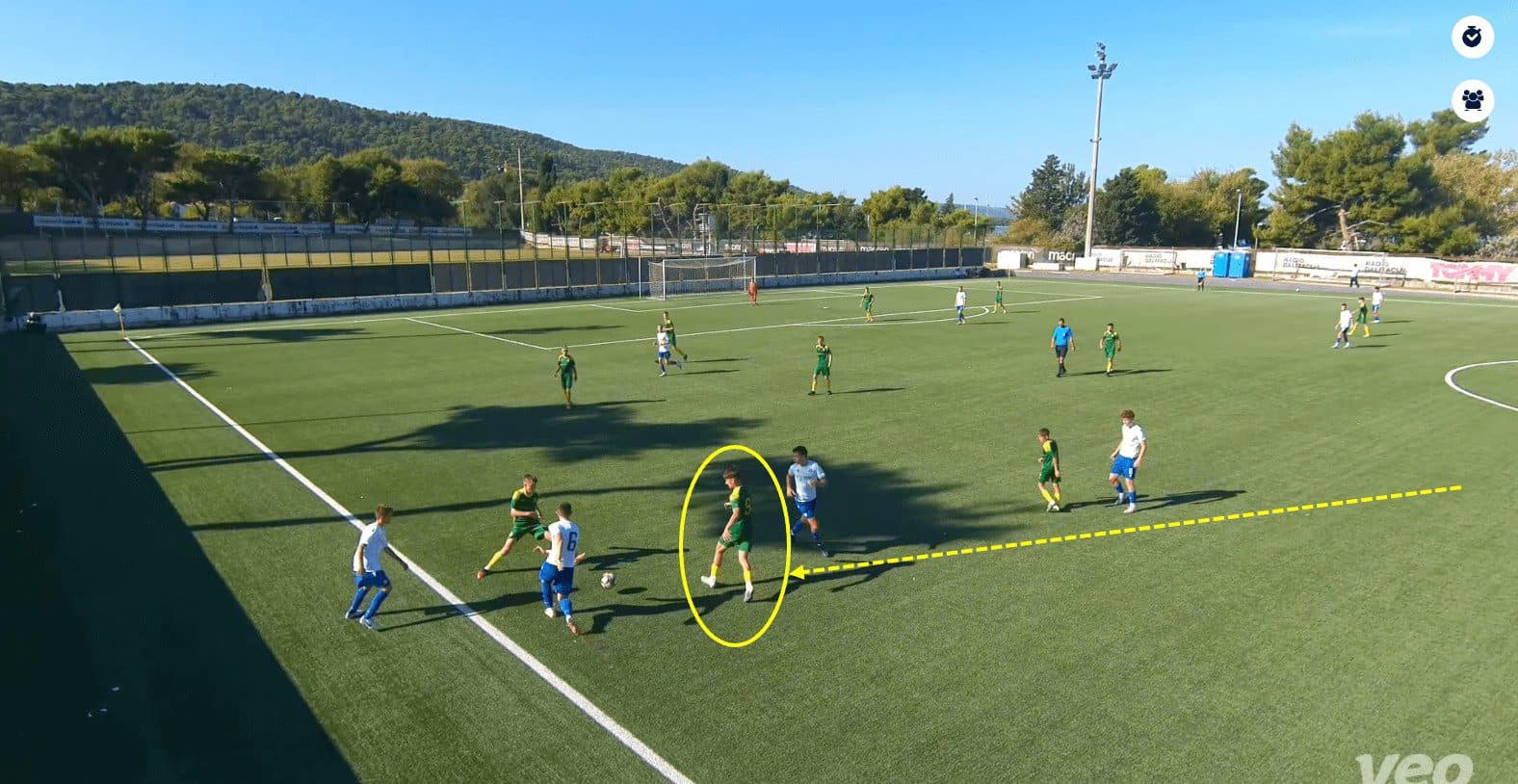
The centre forward also ensures that he helps his team out defensively, tracking a midfield runner as the opposition looks to progress the ball.
Here, he follows the opponent across the pitch and calmly intercepts the attempted pass, allowing Istra to launch a counterattack.
Saina averages 4.7 ball recoveries per 90 in addition to 2.3 ground duels per 90 showing he is not afraid to battle with his opponents and this proves to be very useful defensively.
Overall, Diego Saina has the potential to be a very dangerous striker; he thrives in and around the penalty area and possesses a real poacher’s instinct in front of goal.
He is definitely one to watch out for in the future.
Ante Bilobrk – HNK Gorica
The final player we are going to look at in this analysis is HNK Gorica’s right-footed centre-back, Ante Bilobrk.
The 17-year-old has put in some impressive performances at U17 level this season, and we think he could be one to watch in the future.
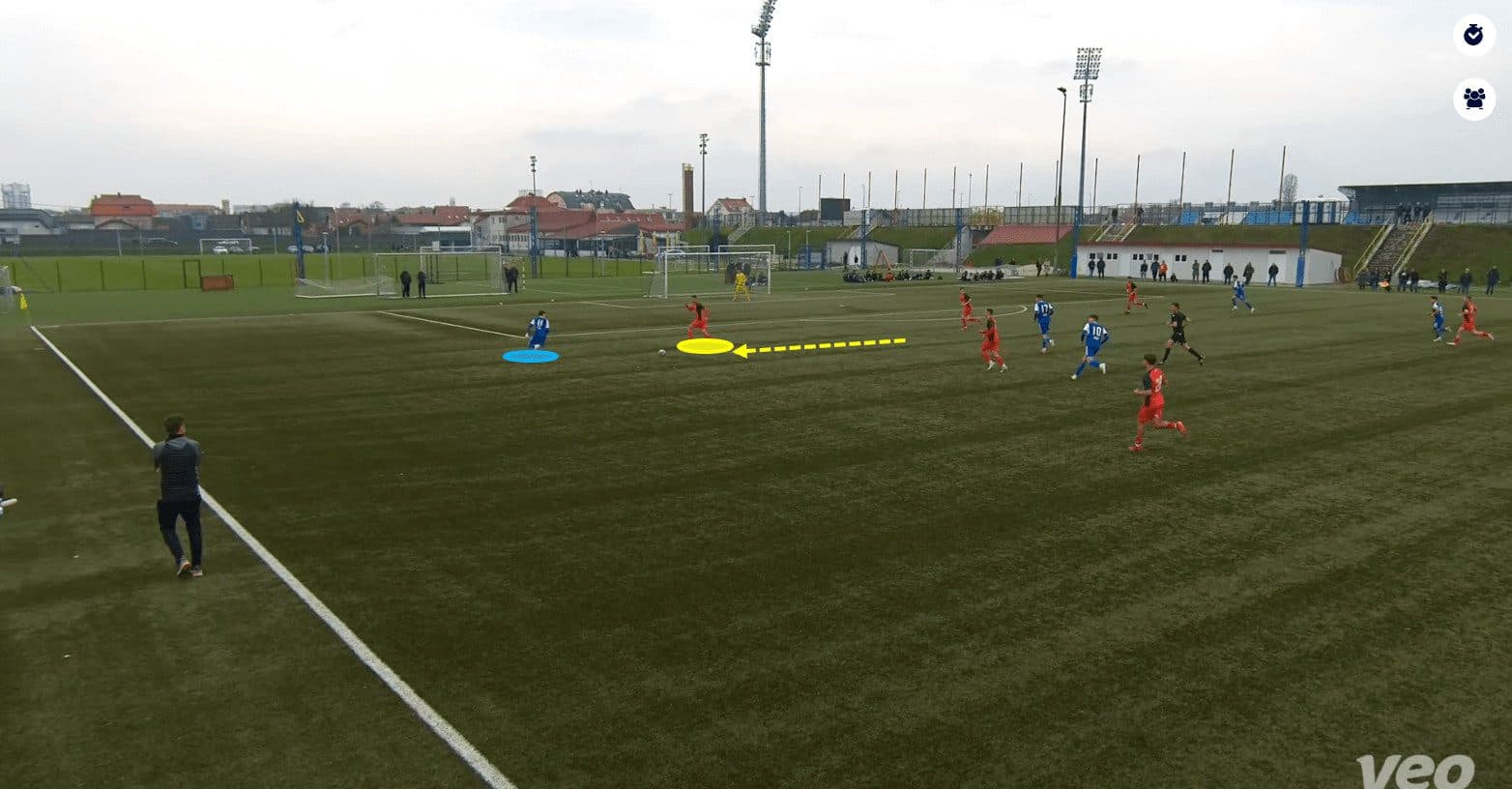
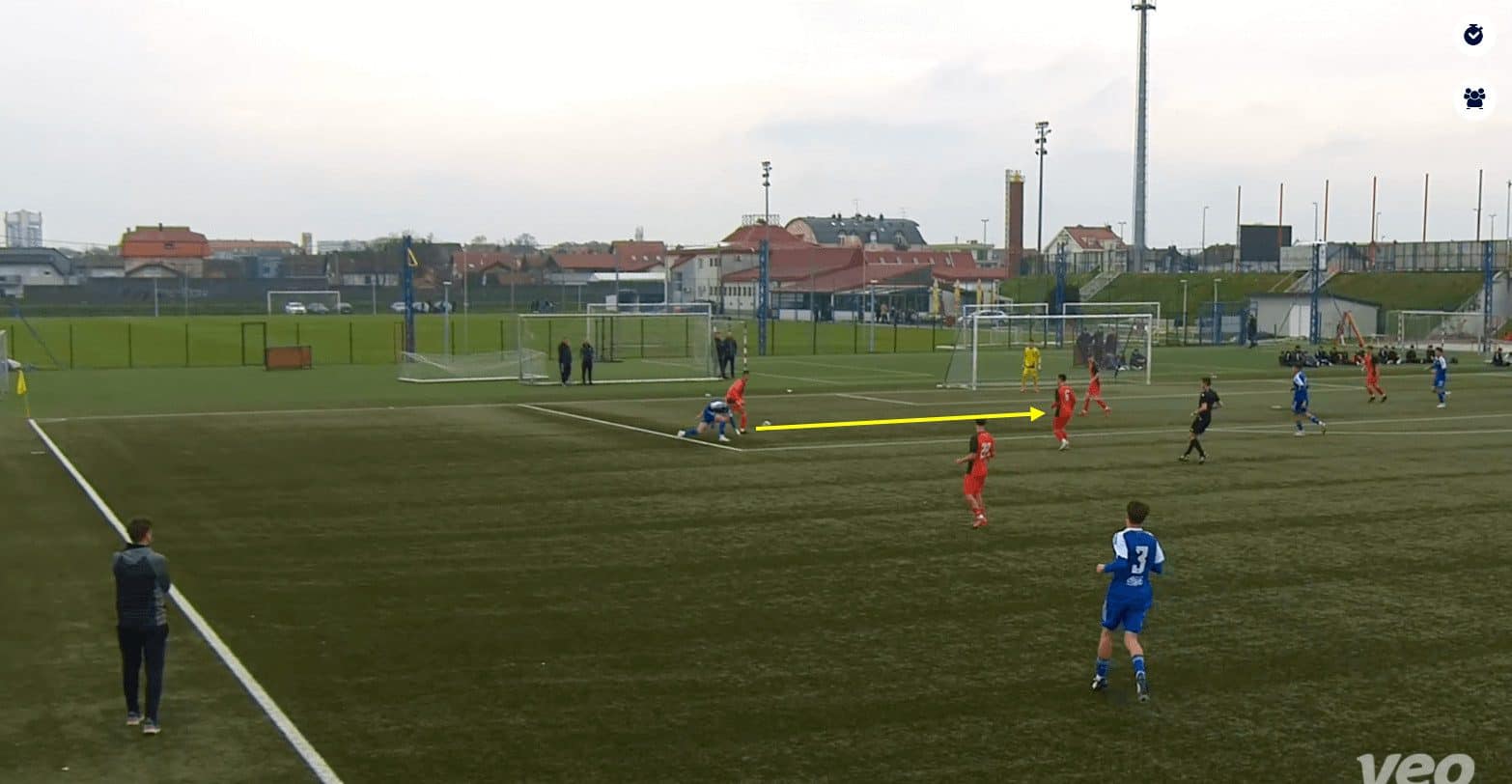
The young defender reads the game well, which is hugely important to Ante Bilobrk’s style of play.
Bilobrk is not that quick, so he requires good tactical understanding to ensure he is in the right place at the right time.
Here, we can see him anticipate the pass the opposition is going to play, and as a result, he actually begins to move before the pass has been played.
Bilobrk tactics prevents the opponent from reaching the ball by ensuring he gets his 1.92m frame between the player and the ball.
Then, he uses his strength to shield possession before calmly playing a short pass into his teammate.
Bilobrk’s reading of the game allows him to anticipate opposition movements and position himself effectively to nullify attacking threats.
Consequently, he can intercept passes, block shots, and thwart attacking moves before they materialise, meaning he minimises the opponent’s goal-scoring opportunities.
It is worth pointing out that the 17-year-old averages 5.1 tackles per 90, a number which is influenced by his lack of speed.
Although he reads the game very well, he can just be a second too late and have to put in a tackle to halt the opposition’s forward movement.
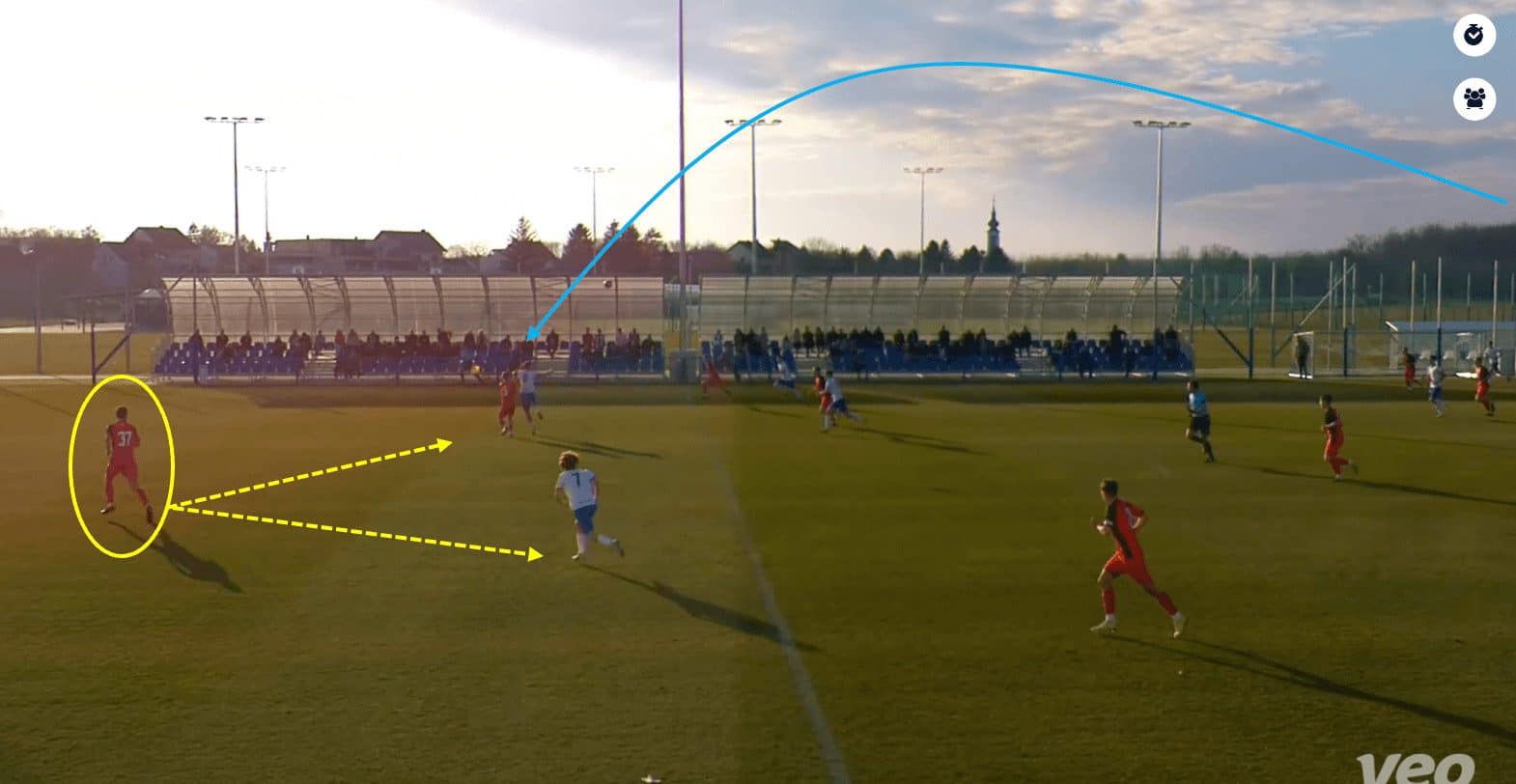
Bilobrk often positions himself well when he is the covering defender, as demonstrated here.
He recognises the potential threats and quickly adjusts his positioning to prevent opposition attackers from exploiting open spaces.
We can see here that he is able to recover any loose balls, of which he averages 6 per 90, and is also on hand to close down or track the run of the opponent if required.
Moreover, Bilobrk serves as a reliable last line of defence, providing a safety net behind his teammates and anticipating the movements of opposition attackers.
Whether it’s tracking the runs of opposition attackers, cutting out passing lanes, or sweeping up loose balls, he demonstrates awareness of defensive duties, which helps to maintain the team’s defensive solidity.
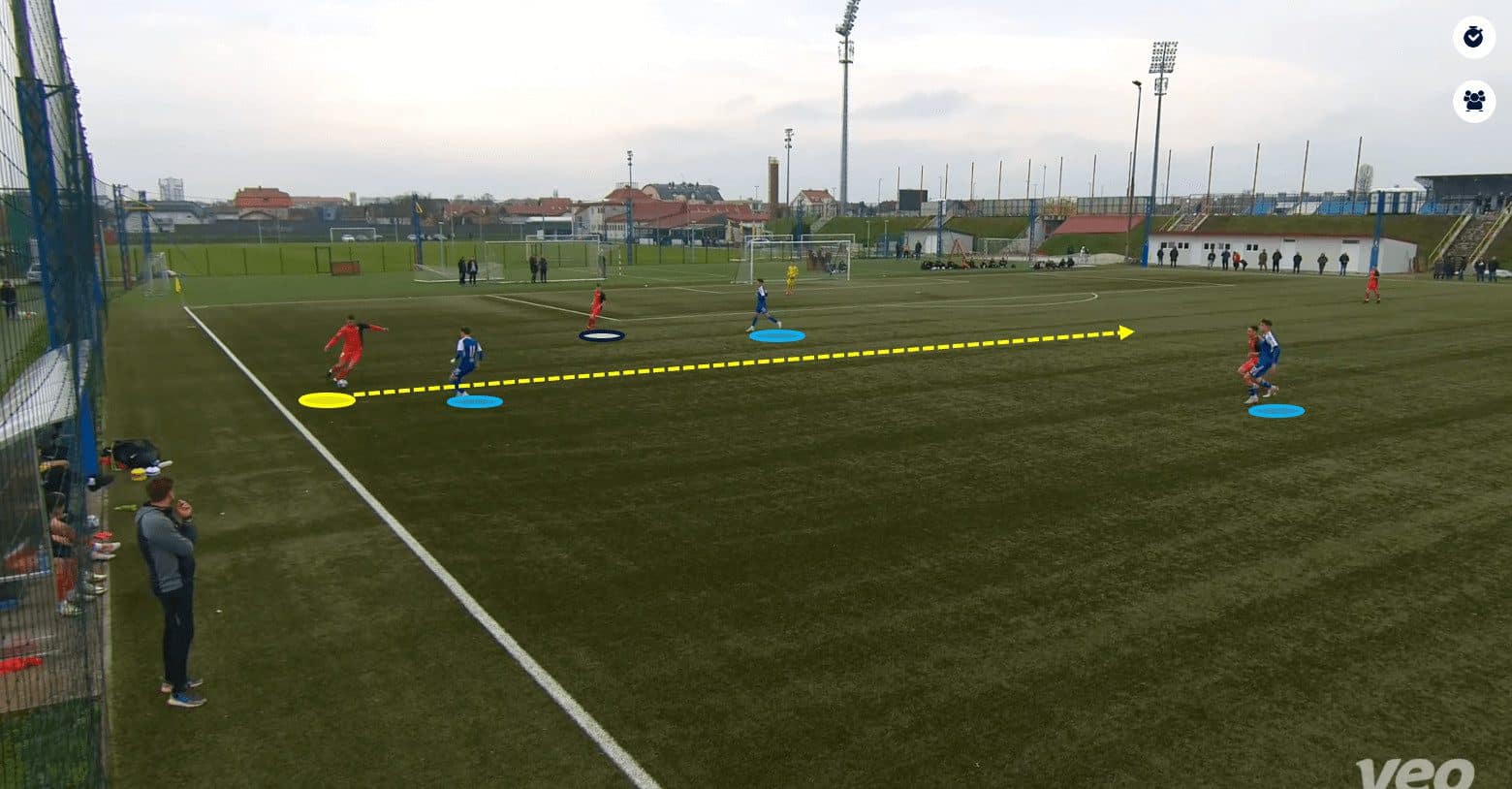
For the most part, the young defender does well under pressure and evades the opposition when looking to play out of defence.
In this instance, he calmly carries the ball away from the opposition press, using his close control to ensure he retains possession.
Bilobrk is usually quite reliable when his team is looking to build an attack from the back.
His composure under pressure shows that he is a calming influence on HNK Gorica and helps to alleviate any sense of panic when his team is in possession.
Furthermore, his ability to evade opposition pressure allows Bilobrk and his teammates to bypass the first line of the opposition’s defence and progress the ball into midfield or attacking areas more effectively.
As opposition players move towards him to press, it opens up passing lanes for the midfielders to receive the ball.

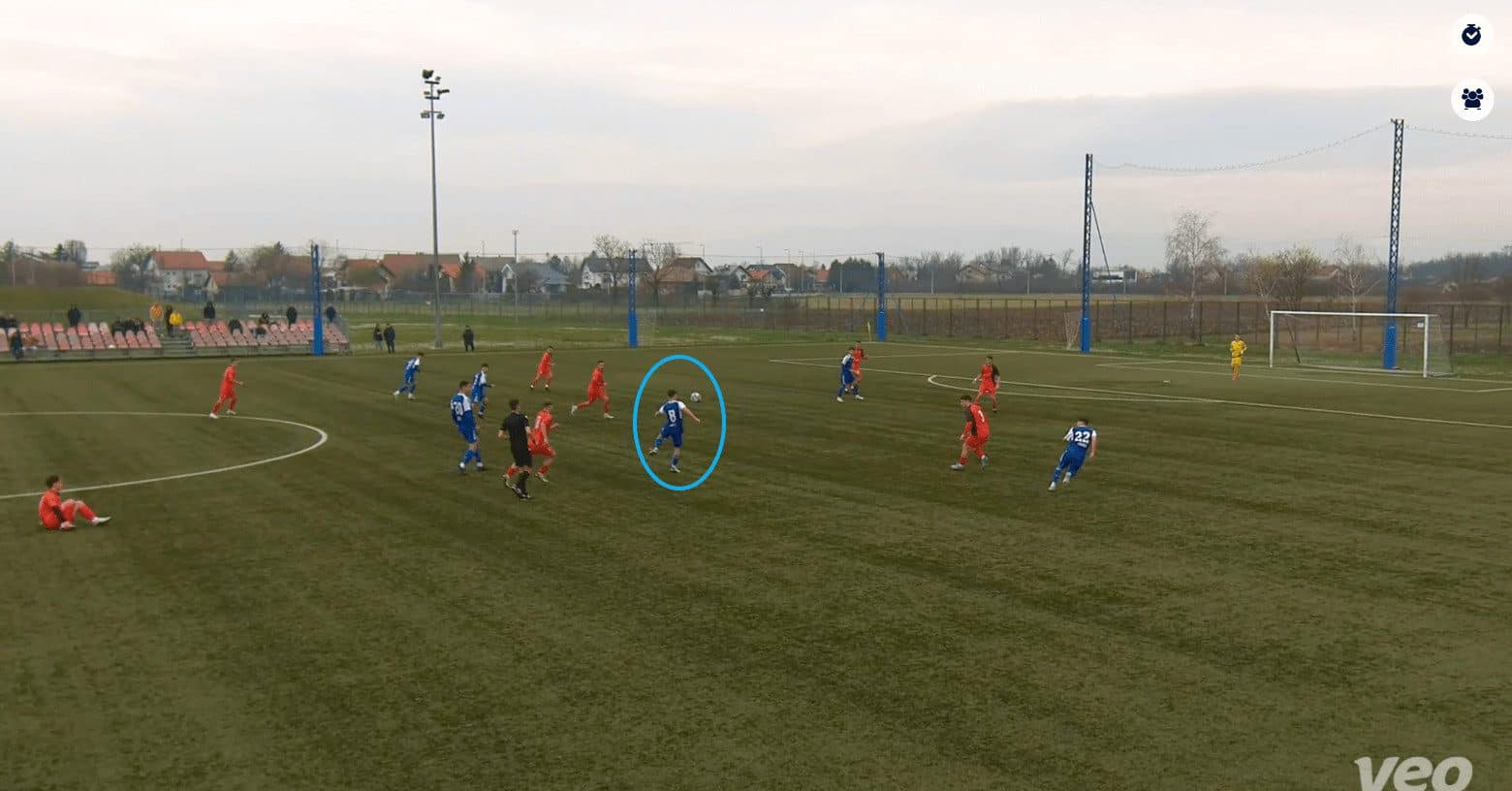
There are occasions where Bilobrk makes some poor choices when under pressure.
In this example, he judges the flight of the ball well initially.
However, due to being under pressure from the opponent, the HNK Gorica defender makes a poor decision and heads the ball back into a dangerous area where the opposition immediately seizes upon it.
Ante Bilobrk is not the finished article.
He has a few areas of his game that need to develop, but overall Ante Bilobrk’s scouting report looks to be a very promising prospect in central defence.
Conclusion
This scout report has highlighted three players we think you should keep an eye out for in the future.
We have seen how Noa Skoko adds dynamism and unpredictability to the Hajduk Split attack and how Diego Saina brings his goal-poaching prowess to NK Istra.
Additionally, Ante Bilobrk is a talented central defender in HNK Gorica’s youth system.
We don’t think it will be too long before these three begin to make the step up to senior level. They are a trio of players to watch, for sure.





Comments